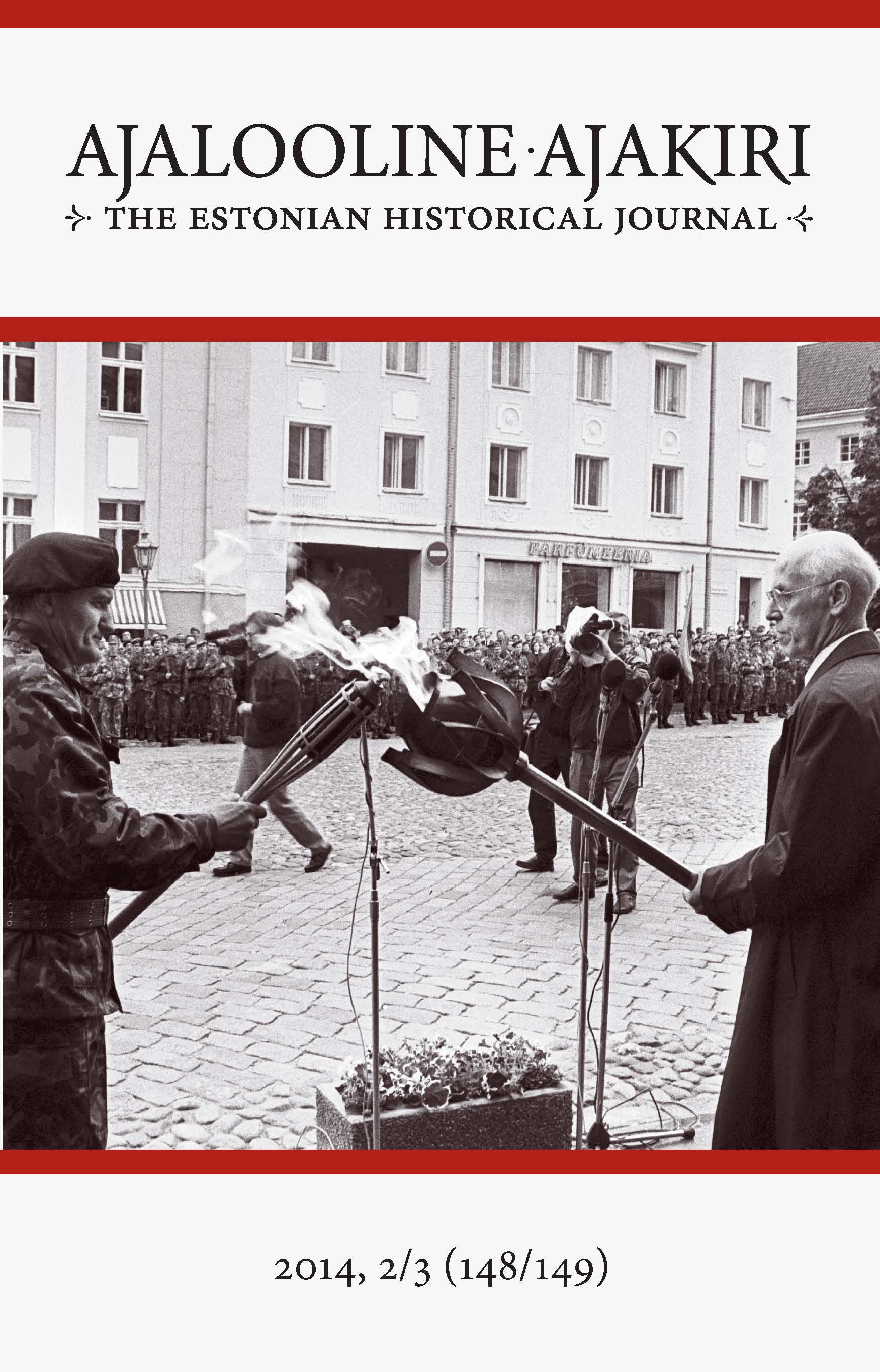Uuemaid uurimusi külma sõja ja Nõukogude Liidu lõpust [Abstract: New research on the end of the Cold War and the collapse of the Soviet Union]
DOI:
https://doi.org/10.12697/AA.2014.2-3.04Abstract
This article reviews three new books on the history of the Cold War and the dissolution of the Soviet Union, focusing in particular on the authors’ views on the end of the Cold War, the dissolution of the Soviet Union and early Estonia-Russia relations. “Cold War: an international history” by Carole K. Fink is a useful textbook for university students and teachers. Its main objective is not to ohver new perspectives on the history of the Cold War, but rather to summarize the main ongoing debates and to write a concise and readable narrative. The strength of Fink’s text lies in its chronological scope: it starts in 1917, seeing the Bolshevik revolution as the trigger for the Cold War, and finishes with the September 2001 attacks on the Twin Towers, which she considers the mark of the end of the post-Cold War era. “The last empire: the final days of the Soviet Union” by Serhii Plokhy is, in scope and intent, a very different book. This is a detailed autopsy of the last months of the Soviet Union’s struggle for its life, covering the period from July to December 1991. Plokhy’s main argument is that the demise of the Soviet empire was not an inevitable outcome of the end of the Cold War, most importantly because of the consistent and strong support of the Bush administration for Gorbachev’s program to save the Soviet state. This support was maintained until the Ukrainian referendum for independence in November 1991. The fate of the Soviet Union, according to Plokhy, was thus decided primarily by Ukraine. Mati Graf’s book “Impeeriumi lopp ja Eesti taasiseseisvumine 1988–1991” seems to support the view that the Soviet Union had a chance to survive the August Coup, even after the declarations of independence by the three Baltic states. But the Baltic states were an exception among the Soviet republics, for they had the internationally recognized status of being illegally occupied and annexed by the Soviet Union. It is not entirely clear, however, whether Graf actually accepts this point of view, because he contends that the legal position of Estonia, Latvia and Lithuania was similar to that of the Russian SFSR. Graf’s strength lies in the detailed documentation of Estonia’s process of secession from the Soviet Union. It is not often realized that Estonia, Latvia and Lithuania managed not only to declare the restoration of their independence, but also to secede from the Soviet Union according to Soviet laws. The article concludes by discussing Estonia’s early relations with the new, democratic Russia led by Boris Yeltsin. It is still a matter of debatte whether there were “missed chances” in Estonian-Russian relations in the early 1990s. Graf supports the view that Estonia made several mistakes that alienated those forces in Russia that were most sympathetic toward Estonia. This is contested by other scholars. Be that as it may, more thorough research on Estonian-Russian relations, in the context of Russian engagement with the West in the 1990s, would be rewarding for anyone wanting to understand East-West relationships in the post-Cold War era. KEYWORDS: Cold War, Soviet Union, Baltic states, Russia, Perestroika, international systemsDownloads
Download data is not yet available.
Downloads
Published
2014-10-13
Issue
Section
Retsensioonartiklid / Review Articles

